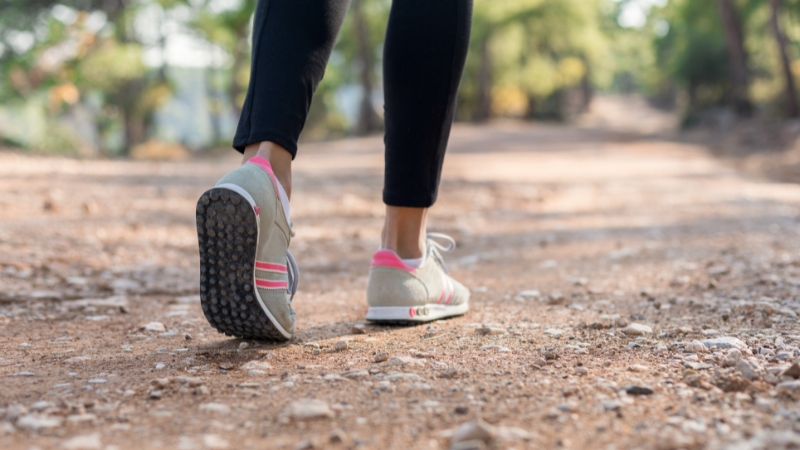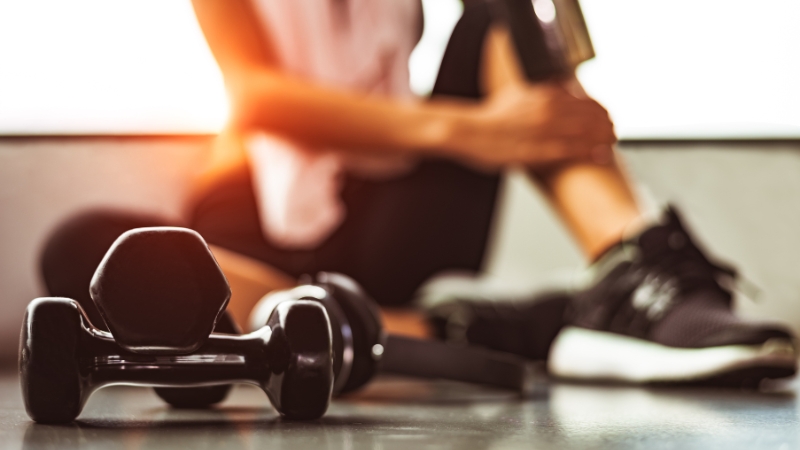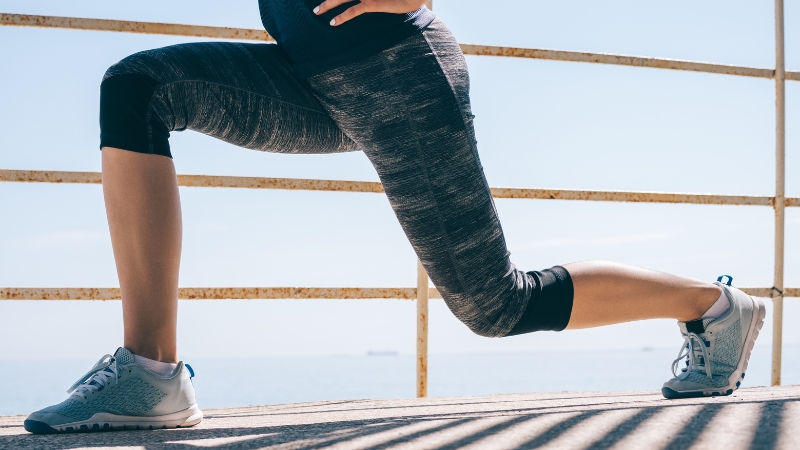
Share Post:
For many, trail running or jogging in secluded parks is more than just exercise — it’s a way to decompress, disconnect from noise, and reconnect with the natural world. The solitude helps clear the mind, lowers stress hormones, and increases endorphins more than urban running.
Research shows that green environments boost attention span, reduce anxiety, and improve cardiovascular markers faster than gym-based exercise.
But with that solitude comes vulnerability. Unlike city streets or gyms, remote areas have less foot traffic, weaker cell signals, and longer emergency response times.
Falls, dehydration, wrong turns, and rare but real encounters with wildlife or strangers can escalate quickly if you’re not prepared.
Key Risks of Running Alone Outdoors
| Risk Type | Examples |
| Injury | Slips on rocky terrain, ankle sprains, and heatstroke |
| Getting Lost | Misreading trail signs, poor visibility, wrong turns on unmarked paths |
| Wildlife Encounters | Dogs, snakes, wild boar, or even aggressive deer |
| Personal Safety Threats | Encounters with strangers, theft, or assault in isolated areas |
| Connectivity Gaps | Areas without a mobile signal make it hard to call for help |
Each of these risks is manageable — but only if you prepare properly before you step onto the trail.
Before You Run: Essential Safety Planning

Your safety starts long before your shoes hit the trail. Whether you’re heading into a familiar wooded path or exploring a new park, solo running in nature requires careful preparation.
The more remote or less populated the area, the more important it is to control the variables you can. These key pre-run planning steps help reduce risk and ensure someone always knows where you are and when to expect you back.
1. Plan Your Route and Share It
Always map out your route in advance using a reliable platform like AllTrails, Komoot, or Google Maps. Look for trails with recent activity, clearly marked paths, and reviews or notes about closures, wildlife sightings, or technical sections.
Choose a route appropriate for your current fitness level and trail experience. Avoid unfamiliar shortcuts or “off-map” diversions, especially when alone.
Once your route is chosen, share your exact plan with someone you trust — including where you’re starting, the full route, expected distance, and your estimated return time. Some apps (like Strava Beacon or Garmin LiveTrack) let you share real-time tracking with select contacts, which is even more secure.
2. Check Weather, Trail Conditions, and Daylight Hours
Weather conditions in natural areas can shift rapidly, especially in wooded or mountainous regions. Always check a localized weather report for your trail area — not just your city — and look at hourly forecasts to avoid sudden temperature drops, rainstorms, or high winds.
Running just before sunset or in foggy, low-visibility conditions increases the risk of injury and getting lost. Be aware of how quickly it gets dark in your area, especially in heavily wooded environments, where sunset can feel like nightfall an hour earlier.
Aim to finish your run at least 30–60 minutes before full darkness, especially if you’re unfamiliar with the trail.
3. Understand the Terrain
Not all trails are created equal. Some are smooth gravel paths perfect for beginners, while others involve steep elevation, loose rocks, roots, or stream crossings. Assess the technical demands of the trail before deciding to run it solo.
Trails with switchbacks, narrow ledges, or fast descents can be risky when running alone, especially if the trail is isolated and emergency response would be delayed.
Review recent trail updates, photos, or topographic profiles if available. Stick to trails with good signage and visible trail markers. If you’re not sure what to expect, pick a safer, shorter loop and revisit more challenging trails with a running partner next time.
4. Charge Your Devices — and Choose Wisely

Before you leave, fully charge your phone, GPS watch, and personal GPS trackers (if you use one). At a minimum, your phone battery should be at 80% or higher. If you’re relying on digital navigation or safety apps, battery life is essential.
Avoid activities that drain your battery quickly, like streaming music or running multiple background apps. Download offline trail maps or screenshots in case you lose signal mid-run.
If you’re using a personal GPS tracker like a Garmin inReach Mini, ensure it’s synced and transmitting before you head out. These devices often work through satellite communication and can be lifesaving in no-service zones.
Safety Gear to Bring On Every Solo Run
| Item | Why It Matters |
| Personal GPS Tracker | Sends your real-time location to emergency contacts or apps |
| ID/Medical Bracelet | Critical in case of injury or unconsciousness |
| Phone with Offline Map App | Helps navigate if cell service drops |
| Pepper Spray or Whistle | For wildlife deterrence or human threats |
| Hydration Pack or Water Bottle | Prevents heat exhaustion on longer routes |
| Headlamp or Small Flashlight | Essential if your run extends into dusk or low visibility |
| Mini First Aid Kit | Covers scrapes, blisters, or small cuts |
Of all the above, the personal GPS tracker is one of the most effective tools for solo runners. Unlike a phone, it can send your location even without a cell signal, and many models include an SOS button that alerts emergency services instantly.
Devices like the Garmin inReach Mini or Apple Watch Ultra with emergency contact integration provide peace of mind in remote zones.
Smart Running Habits That Improve Safety

Running solo in nature can be both invigorating and restorative, but it also requires heightened awareness. Adopting a few smart habits makes a significant difference in reducing risk exposure.
One of the most important rules is to stay fully engaged with your surroundings. On isolated trails, it’s best to avoid wearing earphones altogether, as your ability to hear is just as crucial as your ability to see. If you do prefer music or podcasts, consider using only one earbud or bone-conduction headphones that allow ambient noise to remain audible.
Choosing the right time of day can also impact your safety. While nature may seem quiet at all hours, early mornings and late afternoons often see more walkers, hikers, and other runners. These are ideal windows to run solo because help is more likely to be nearby if needed.
Whenever possible, stick to established and marked trails. Creating shortcuts or experimenting with new routes may be tempting, but often lead to disorientation or unintentional encounters with wildlife or unstable ground.
Paying close attention to the terrain underfoot is another often overlooked precaution. Uneven ground, exposed tree roots, slick leaves, and gravel descents are common on trails and are responsible for a large share of running-related injuries.
Keep your gaze ahead and slow your pace through technical sections. If you’re running for a longer distance, it’s a good idea to pause mid-run and send a quick location update using your GPS tracker or smartwatch. This small step confirms your progress and reassures anyone monitoring your safety.
What to Do If Something Goes Wrong

Here’s how to handle common emergencies when you’re out alone:
You Get Injured
- Stop and assess: Can you walk? Is the injury stable?
- Use your GPS tracker to notify a contact if needed.
- If unable to move and no help is near, stay in place and make yourself visible.
You Get Lost
- Don’t panic or keep moving aimlessly. Backtrack to the last known marker.
- Use an offline map or GPS to reorient. Most runners get lost less than a mile from their intended path.
You Feel Unsafe
- Move toward a more open area or the nearest group of people.
- Carry yourself with confidence. Avoid engaging.
- If needed, use your whistle, shout clearly, or trigger your emergency alert.
Tips Specifically for Women Runners
While running alone is empowering, women face additional concerns regarding personal safety. To stay secure:
- Use apps like Strava Beacon, Road ID, or Garmin LiveTrack to share your real-time location.
- Avoid posting live run data or future routes on social media.
- Consider carrying pepper spray or a discreet safety device (e.g., Birdie alarm).
- Choose well-reviewed, active trail areas, not unknown backwoods.
Many experienced women runners also form check-in circles: friends who expect a text when a run starts and finishes.
Signs That Your Safety Setup Is Working
Here’s how you know your safety approach is effective:
- You complete solo runs with full route awareness and no surprises.
- You’ve tested your GPS tracker and emergency gear at least once.
- Family or friends feel informed, not worried, about your solo plans.
- You’re reacting confidently to unexpected changes (e.g., a blocked path, late return).
- You know when to cancel a run based on your gut or external signs.
If all these apply, you’re well-prepared, and your running routine supports both freedom and security.
Conclusion
@sha_______6 me time🍃 #running #nature ♬ original sound – Boundless Athletic 🧬
Running alone in nature can be one of the most rewarding forms of movement, but only when done with thoughtful preparation. Whether you’re training on forest trails or unwinding along a lakeside path, your safety should never be left to chance.
A reliable, smart gear choice, route planning, and safety-minded habits ensure that your runs remain empowering, not risky. You don’t need to give up solo runs — you just need to do them with awareness, confidence, and the right tools. When you respect the risks, you can fully enjoy the rewards.
Related Posts:
- Feeling Bloated at the Gym? Here’s Why It Happens…
- Leg Pain from Poor Circulation? Here Are the…
- Struggling to Lose Weight? Here’s What Might Be Going Wrong
- Is Your Workout Causing Your Acne? Here's How to Stop It
- Should You Work Out While Pregnant? Here’s What Experts Say
- Dealing with Back Pain? Here’s How to Start…









